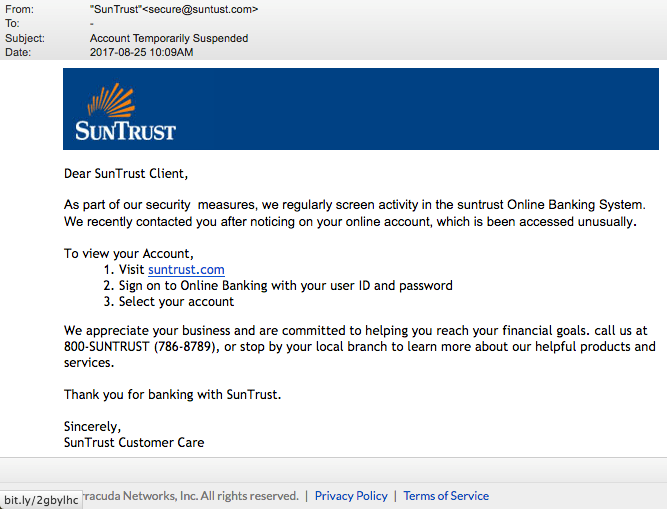Phishing Scams: What Do They Look Like and How to Deal With Them
With the online age, phishing scams have become very common. A phishing scam is a cybercrime in which scammers try to lure sensitive information or data from you, by disguising themselves as a trustworthy source. They come in many forms, including texts, emails, and calls.
How to Spot a Phishing Scam:
Though scammers have become better at disguising their emails and texts as genuine, there are still some signs you can look for:
- Too good to be true offers. Phishing emails may try to hook you with what appears to be incredibly cheap offers for things like smartphones or vacations. The offers may look irresistible, which is how they hook you. They’re likely phishing emails.
- A bank — maybe not even your own — is asking for your account information or other personal financial information. Your bank, or any financial institution, will never ask for your Social Security number, bank account number, or PIN by email. Never provide this information in response to an email.
- Spelling and grammatical mistakes. There was a time when you could easily spot phishing emails because they were littered with spelling and grammar mistakes. Scammers have gotten better at avoiding these errors, but if you do receive an email littered with typos and weird language, that email might be sent from someone phishing.
- The generic greeting. Phishing emails might not be addressed specifically to you. Instead, the email might start with a generic greeting such as “Dear Sir or Madam” or “Dear Account Holder.”
- A call for immediate action. Phishers want you to act quickly, without thinking. That’s why many will send emails asking you to immediately click on a link or send account information to avoid having your bank account or credit card suspended. Never reply hastily to an emergency request. Urgent requests for action are often phishing scams.
- Senders you don’t recognize. If you don’t recognize the sender of an email, consider deleting it. If you do decide to read it, be careful not to click on links or download files.
- Senders you think you recognize. You might get a phishing email from a name you recognize. But here’s the catch: That email may have come from the compromised email account of someone you know. If the email requests personal information or money, it’s likely it’s a phishing email.
- Hyperlinks. If you receive an email that requests you click on an unknown hyperlink, hovering over the option might show you that the link is really taking you to a fake, misspelled domain. This link is created to look legitimate but is likely a phishing scam.
- Attachments. The sender included attachments that don’t make sense or appear spammy.
Here are some examples of real phishing scams:


How to Deal With Phishing Scams:
If you can recognize these scams, avoiding them becomes very easy. If you get a call or text, block the number. If you get an email, just delete it and ignore it. Do not click on any links or open any attachments in emails that you do not know are 100% safe, and never give important information such as passwords (especially bank info) to an email.
